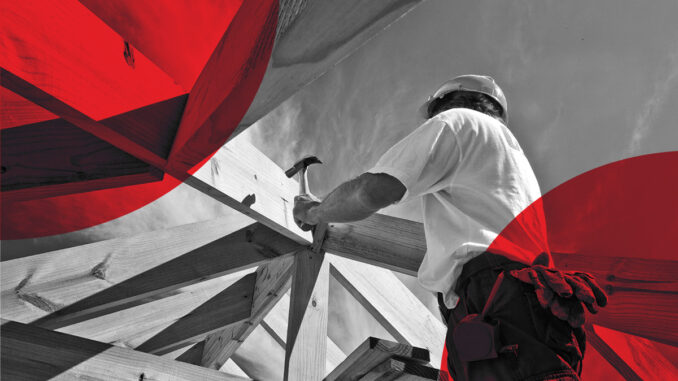
Homebuilders are responding to an increase in new home sales and an extremely low level of existing home inventory by getting a jump start on new projects. Privately-owned housing starts in May 2023 checked in at a seasonally adjusted annual rate of 1.63 million, about 22% above the revised April 2023 estimate of 1.34 million, according to the U.S. Census Bureau.
There are now 1.69 million single-family and multifamily housing units under construction in the United States, approaching the highest levels recorded in the last 50 years.
Housing economists agree that market dynamics have turned the tides in builders’ favor over the past 12 months, as homebuyers frustrated with still-limited existing inventory take a closer look at new homes. Yesterday, the National Home Builder’s Association’s builder’s confidence index surpassed the midpoint of 50 (out of 100) for the first time since July 2022, confirming the return of a breezy market for homebuilders.
Overall, single‐family housing starts in May came in at a rate of 997,000, 18.5% above the revised April figure of 841,000. The May rate for units in buildings with five units or more was 624,000.
According to the Census Bureau, there were 695,000 single-family units under construction in May, which was down from April and about 135,000 below the peak in May 2022.
Issued permits, an indicator for future completions, also increased 5.2% overall from April, even though they were 12.7% lower from a year ago. Completed homes rose 9.5% from the prior month, and were 5.0% above the May 2022 level.
The pace of single-family home completions picked up from the prior month, especially in the South and West, noted George Ratiu, chief economist at Keeping Current Matters in a statement.
After stepping back from the market in the second half of 2022 due to the shock of surging mortgage rates, homebuyers have accepted the new normal interest range of 6% – 7%, which is aided by incentives offered by homebuilders. With redefined budgets, buyers are looking for their first or next home in a market characterized by its lack of existing home inventory. Hence, more buyers are visiting builders’ model homes, attracted by availability, new technology, higher efficiency and, in some cases, the benefit of a warranty.
There is plenty of demand on the sidelines, and prospective buyers are increasingly turning to homebuilders, said First American Economist Ksenia Potapov. As a result, new homes, which have historically made up approximately 11% of total inventory, now make up roughly 30%.
“With this bump in demand for new homes, permits and starts are back in the positive, soaring past April numbers,” said Zillow Senior Economist Nicole Bachaud. “With new home completions up as well, a steady flow of new homes is making its way to the market when needed the most. This is welcomed news in today’s challenging market.”
Still, most new homes coming to market are not affordable to entry-level buyers. This lack of affordability helped strengthen the rental market, including single-family rental homes, which in many cases have become an alternative for a would-be first-time buyer who is priced out of their market, observed Kelly Mangold, principal at RCLCO Real Estate Consulting.
While homebuilders are all smiles now, there remain challenges: they are still facing a shortage of labor and rising lumber prices, following the severe wildfires in Canada, which have forced sawmills to close, reducing available supply.



